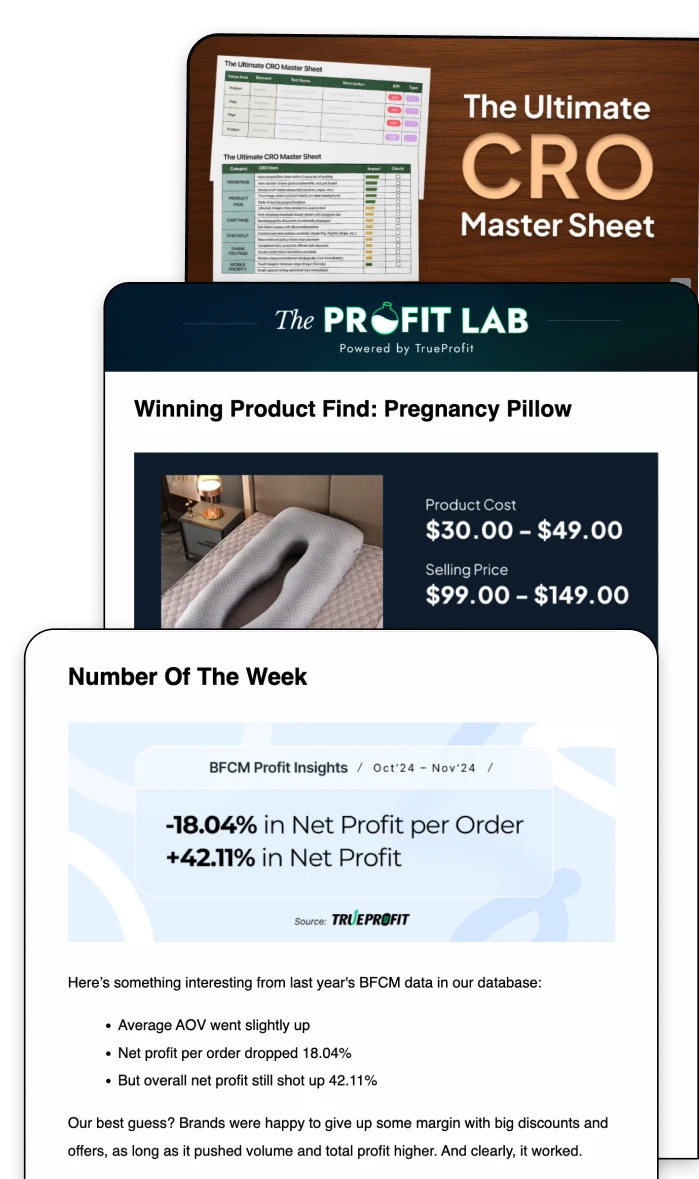Top 7 Non-Traditional Print on Demand Products in 2025
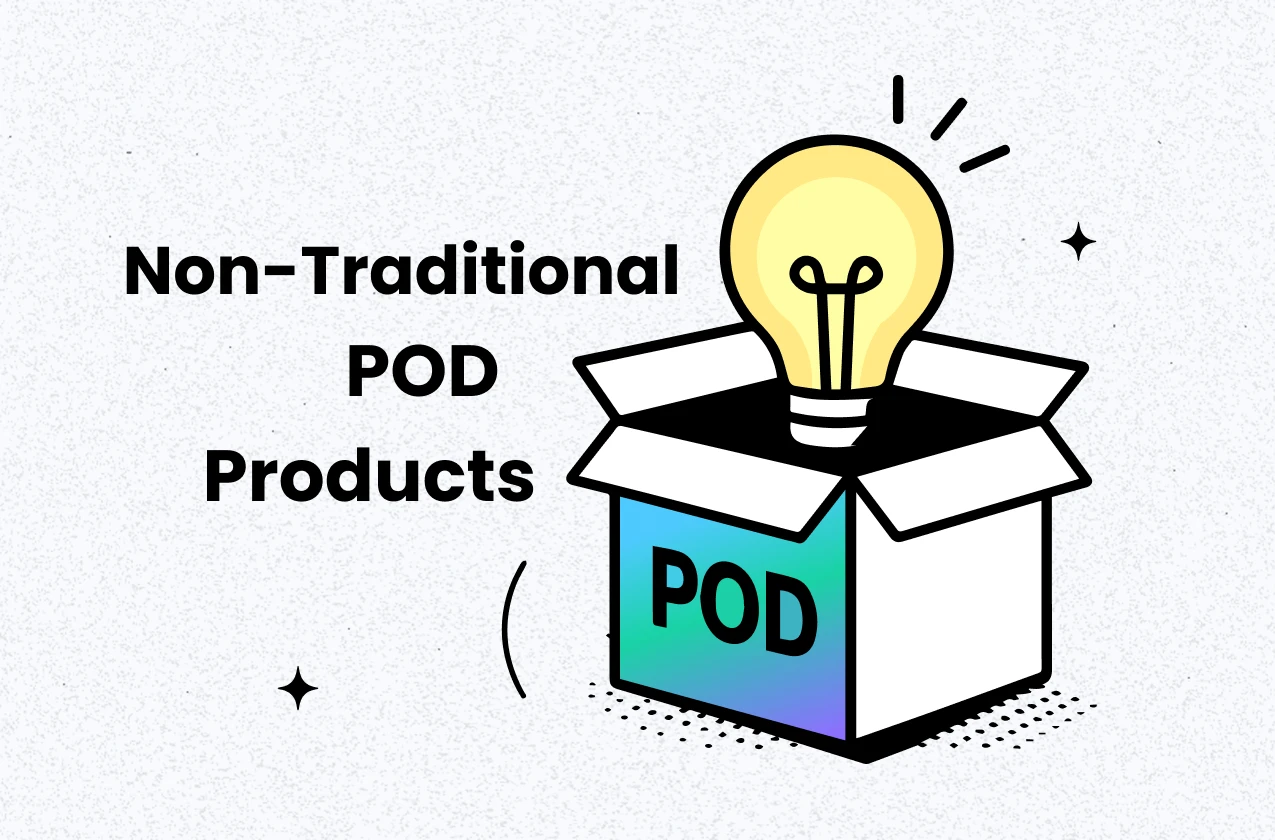
In the crowded world of print-on-demand (POD), going for the “usual suspects” (mugs, tees, phone cases) is often too saturated. Smart POD sellers in 2025 are looking for the weird, the bold, the “nobody’s doing this yet” — but still viable.
We’ll explore 7 non-traditional POD product ideas that could make profits in 2025.
7 Unique Print on Demand Products That Make Profits
First, let’s be on the same page: “Print on demand” means customizable, digitally printed, or on-demand manufacture, extended beyond the usual apparel & mugs. Some of these are borderline hybrid POD + custom manufacturing.
1. Inflatable Tent
- Supplier Price: $600–$900
- Selling Price: $1,990
- Gross Profit Margin: 30–45%
Inflatable tents are perfect for explorers, photographers, and remote workers who crave adventure without sacrificing comfort. Setup is fast — within minutes, you have a fully enclosed, waterproof shelter in nature.
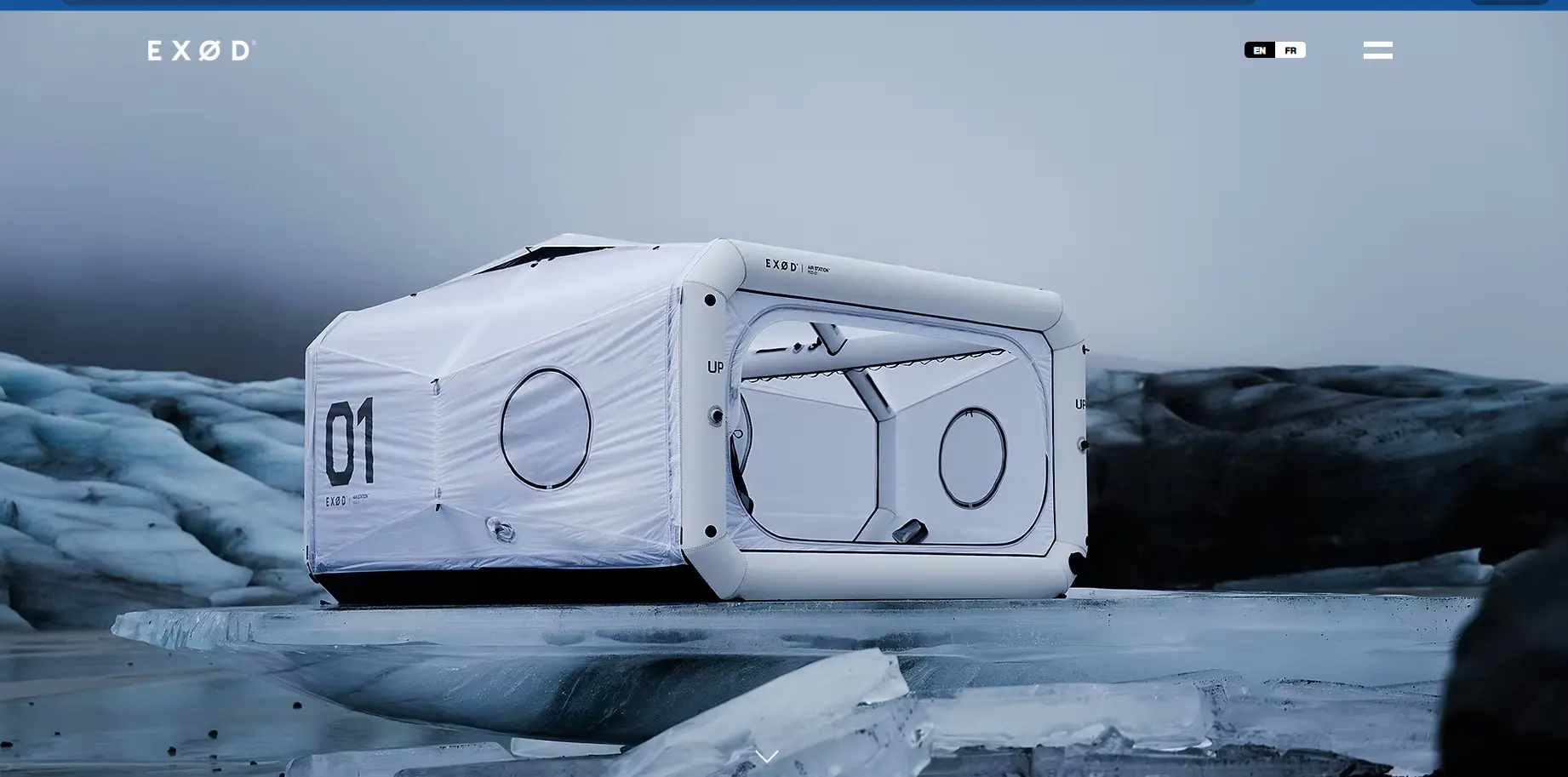
On Google Trends, searches for “inflatable tent,” “inflatable dome,” and “inflatable pod” have seen a year-over-year growth of nearly 30% since 2024.

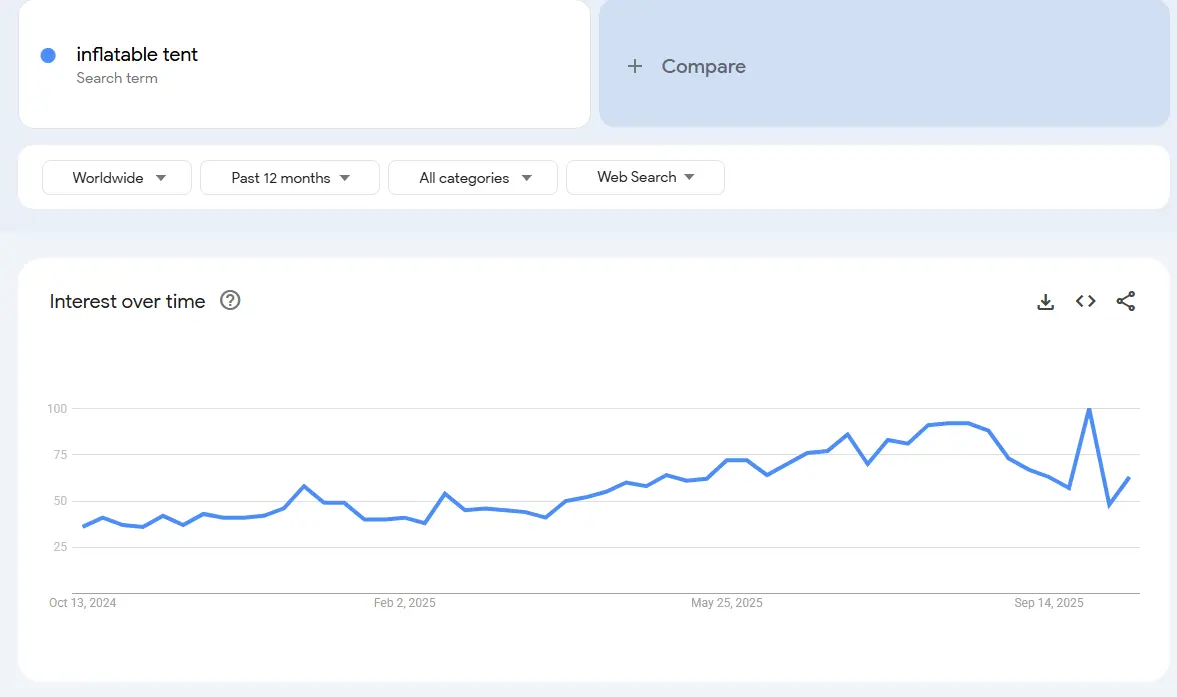
That said, inflatable pods are a high-ticket item. Manufacturing costs range between $600–$900 per unit, while high-end prices can be up to $1,990, leaving a gross profit margin between 30–45%.
2. Balloon House
- Supplier Price: $90–$150
- Selling Price: $300–$400
- Gross Profit Margin: 50–60%
A balloon house is a big inflatable playhouse made from thick PVC or Oxford fabric. It’s filled with air to keep its shape and often comes in bright colors or fun themes. People use balloon houses for kids’ parties, outdoor events, pop-up shops, or even as photo zones.

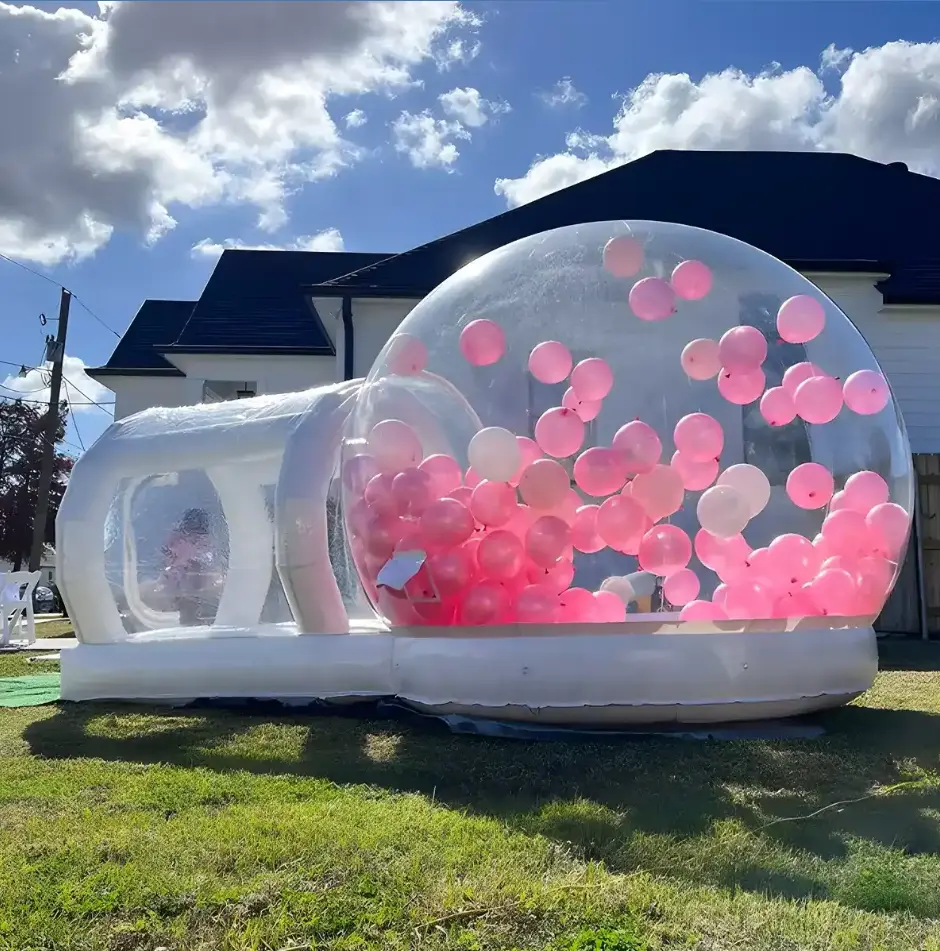
The market demand for balloon houses has been growing quickly. Searches for “inflatable playhouse” and “kids balloon house” have increased since 2024.

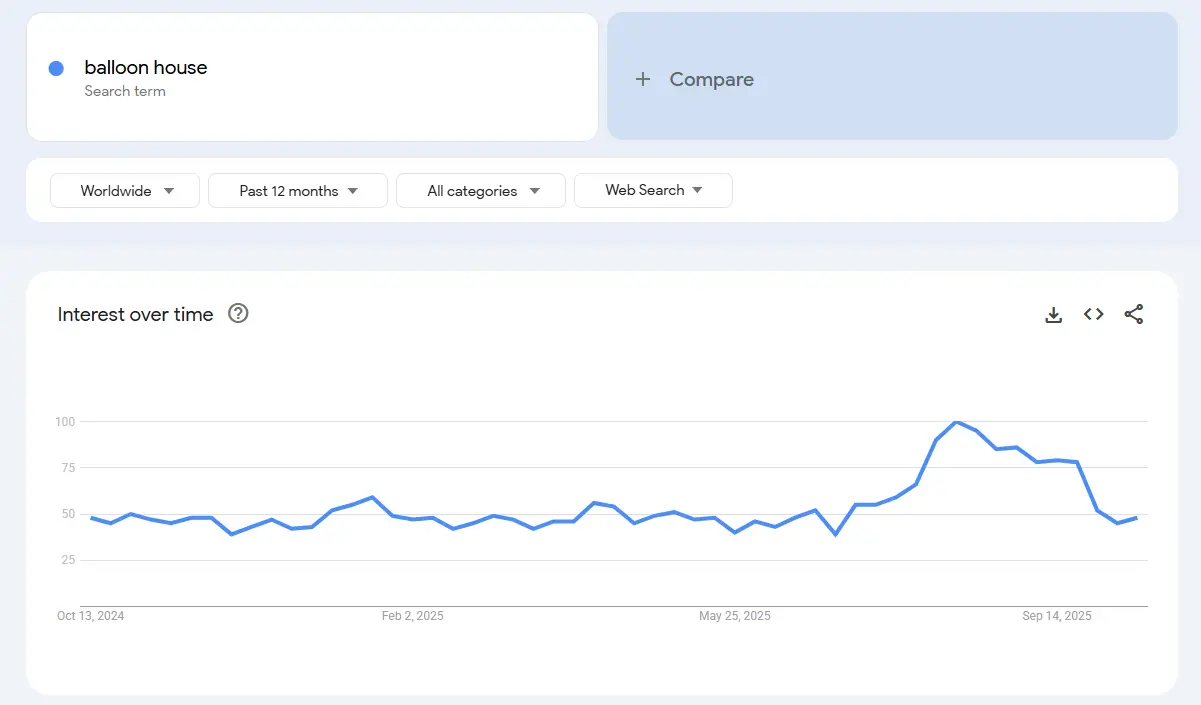
On Alibaba, supplier prices start around $90–$150, depending on size and materials. On Etsy or Shopify, the same products often sell for $300–$400, giving sellers a potential profit margin of 50–60%.

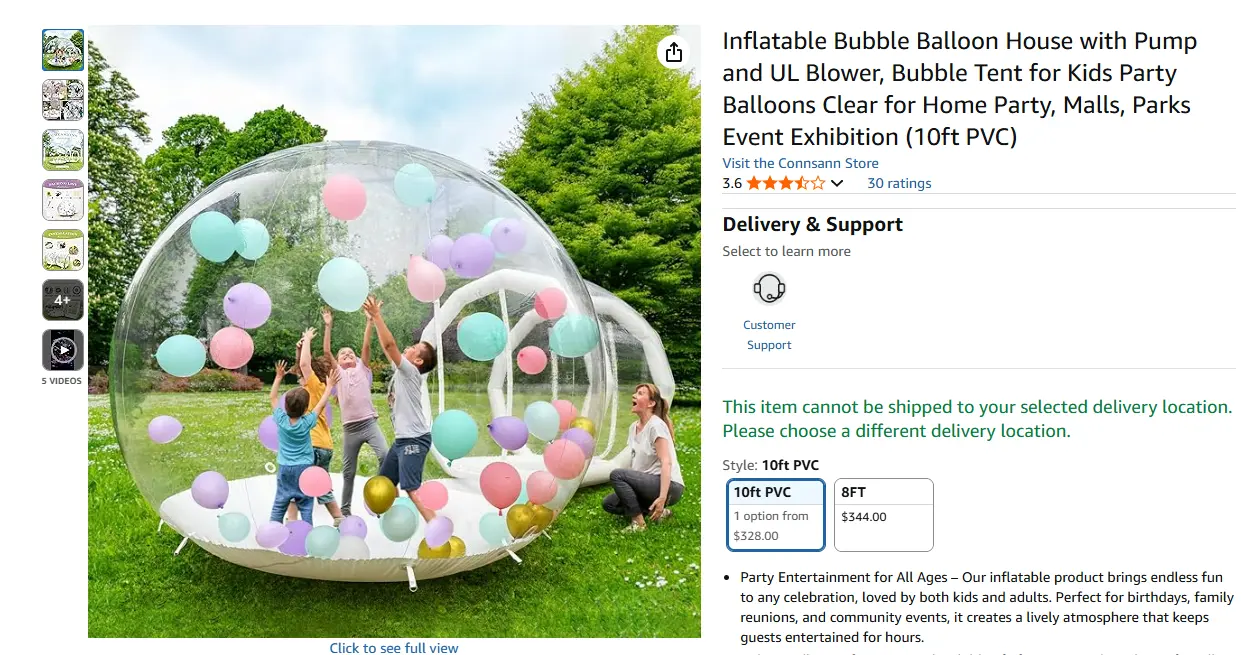
3. Floating BBQ Boats
- Supplier Price: $2,500–$3,500
- Selling Price: $4,000–$5,000
- Gross Profit Margin: 20–40%
A floating BBQ boat is a round boat with a built-in grill and seating area that lets people barbecue while floating on the water. It’s mostly used in lakes, rivers, and resorts as a premium leisure experience for small groups or events.


The market for floating BBQ boats is growing quietly but steadily. Searches for “BBQ donut boat” and “floating boat” have increased since 2024, especially among resorts and water leisure rental companies.

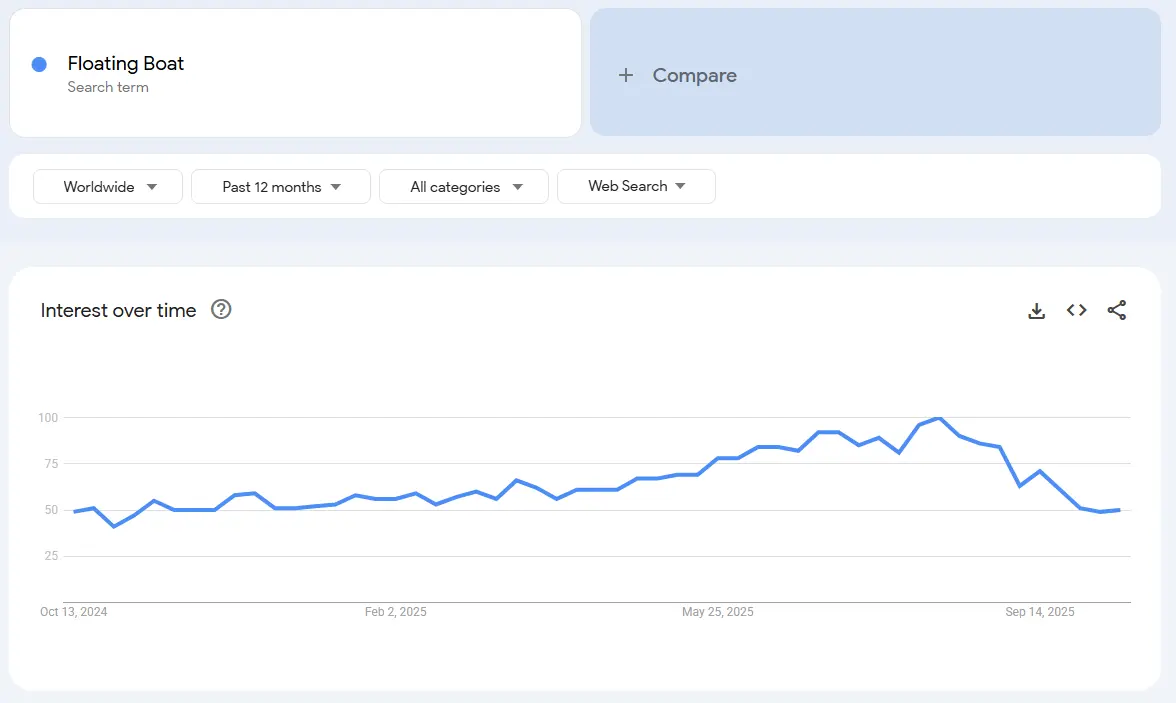
On Alibaba, floating BBQ boats cost around $2,500–$3,500, while retail prices often reach $4,000–$5,000 — leaving a solid 20–40% profit margin.

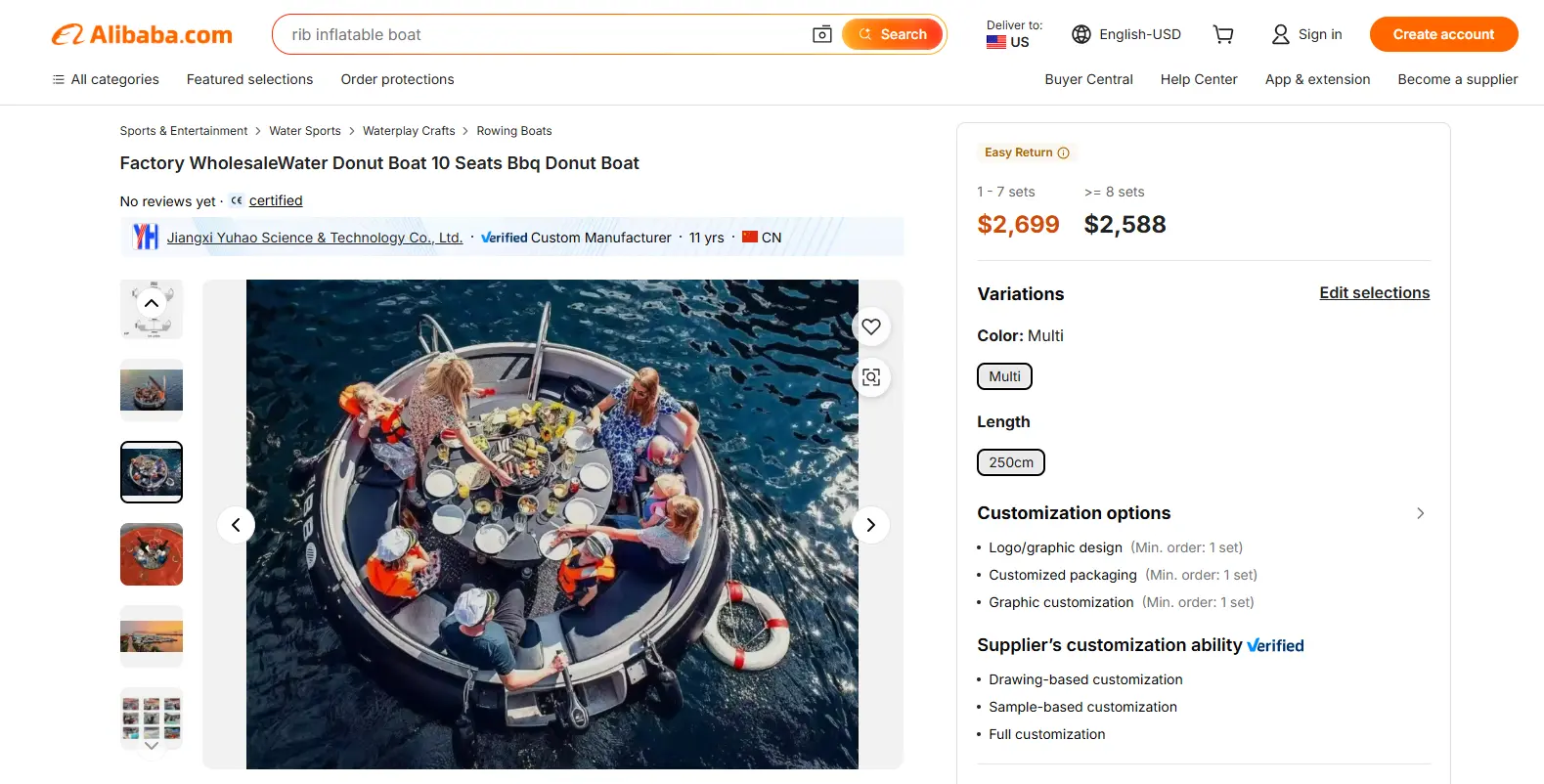
4. Custom/DIY Drink
- Supplier Price: $1–$2
- Selling Price: $3–$6
- Gross Profit Margin: 40–60%
DIY drink is one of the newest twists on print-on-demand. The drink itself comes from a beverage supplier, while the label wrap and design are printed on demand. This lets influencers, small brands, or event organizers create their own signature drink without running a full beverage factory.

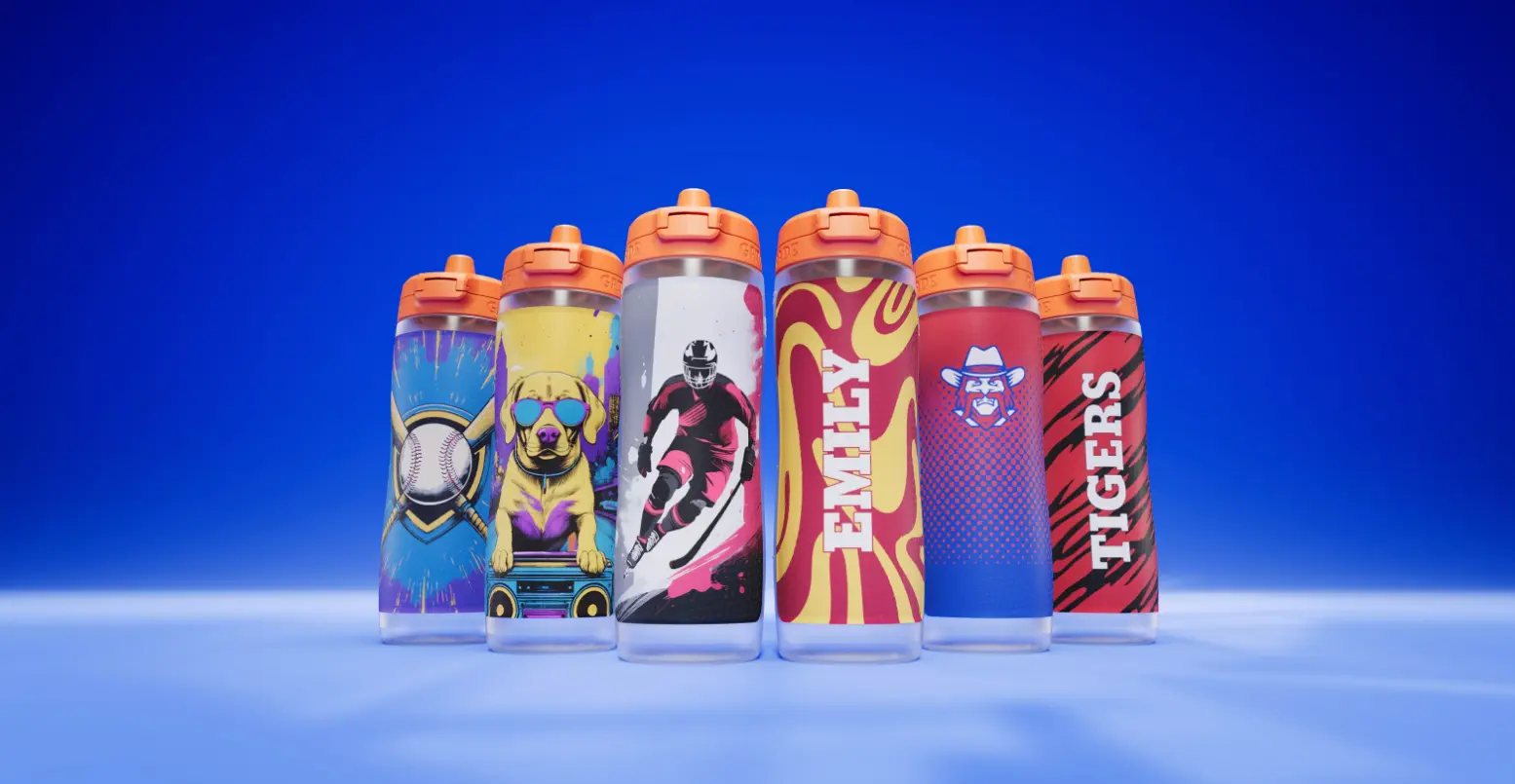
The market is showing early signs of demand. Searches for “custom energy drink” and “private label beverage” have climbed steadily since 2024.

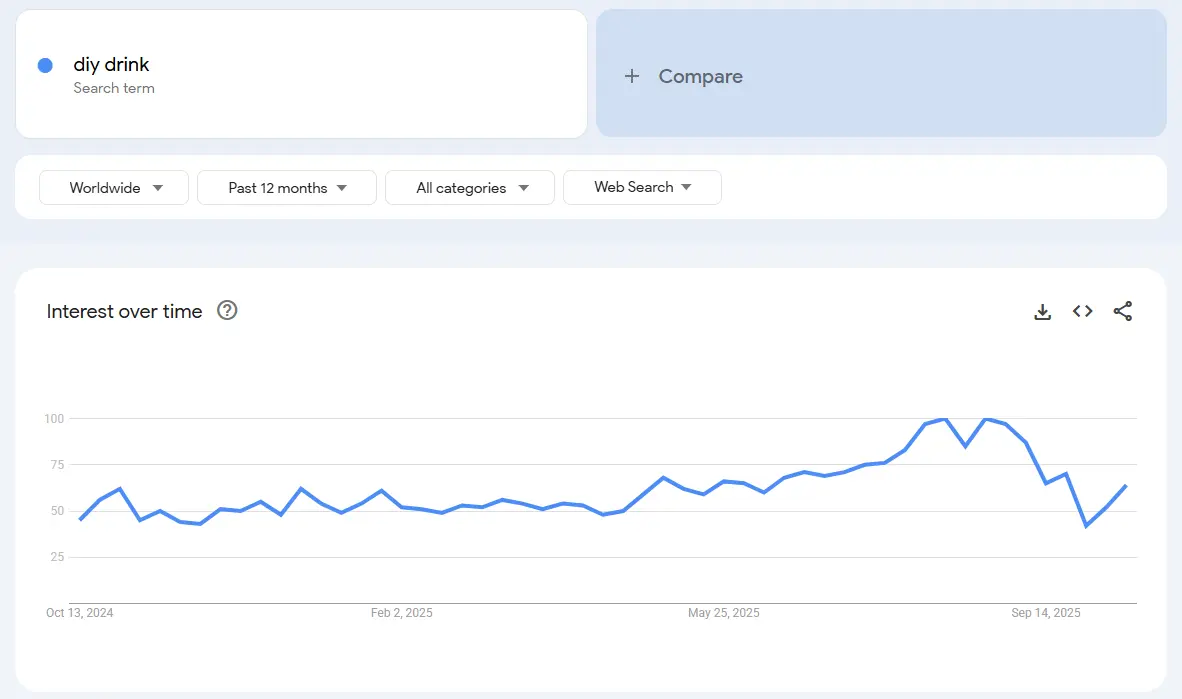
Supplier prices usually start around $1–$2 per can, depending on ingredients and packaging. Customized cans often sell for $3–$6, leaving a 40–60% profit margin. Limited editions or branded collabs can push that even higher.

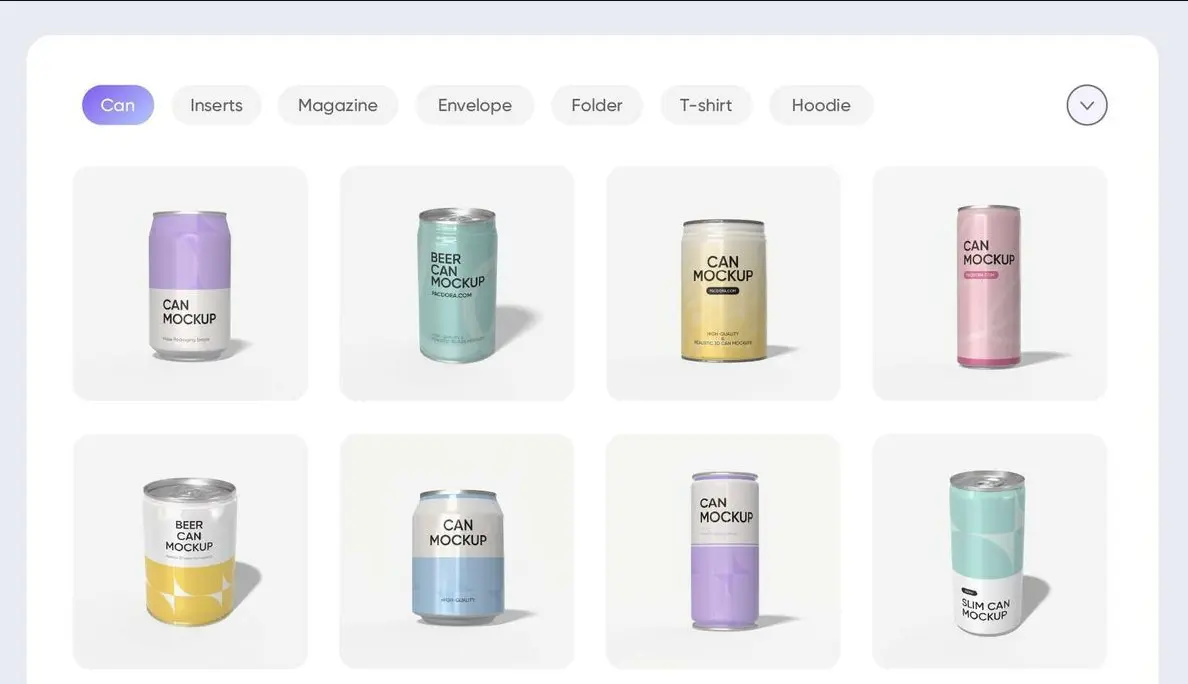
5. Custom Backpack Lunch Pack
- Supplier Price: $10–$18
- Selling Price: $30–$50
- Gross Profit Margin: 40–60%
A custom backpack lunch pack is a mix between a lunch box and a backpack — made for people who want to carry food, drinks, and daily essentials in one bag.

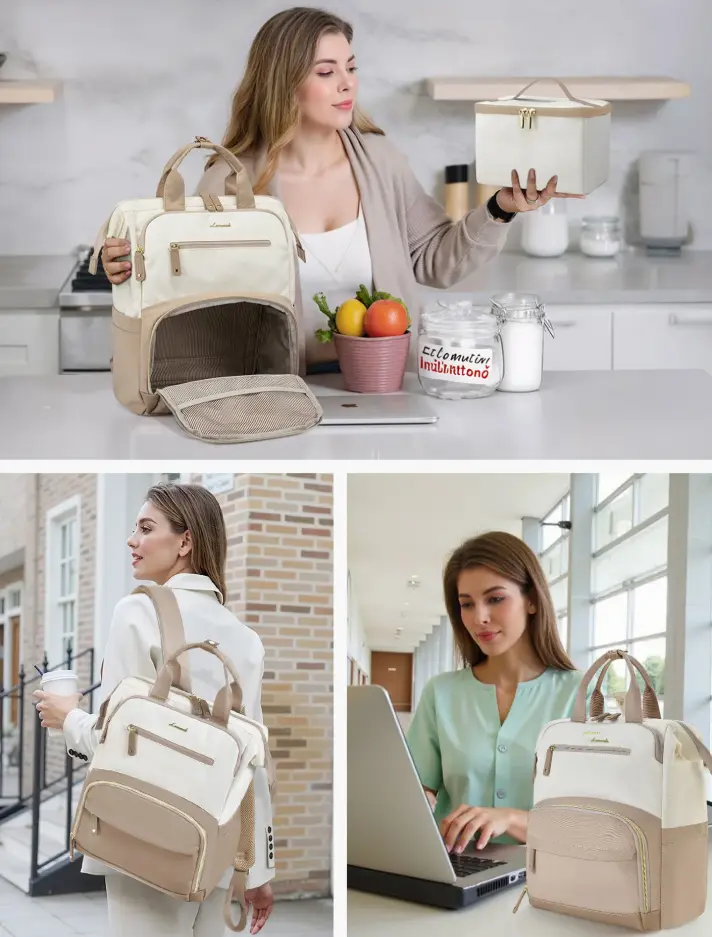
The custom backpack lunch pack had its biggest moment in late 2024 and early 2025. Search interest has cooled a bit since then. But with the right design and audience, a custom backpack lunch pack can still be a profitable, evergreen addition to any POD store.

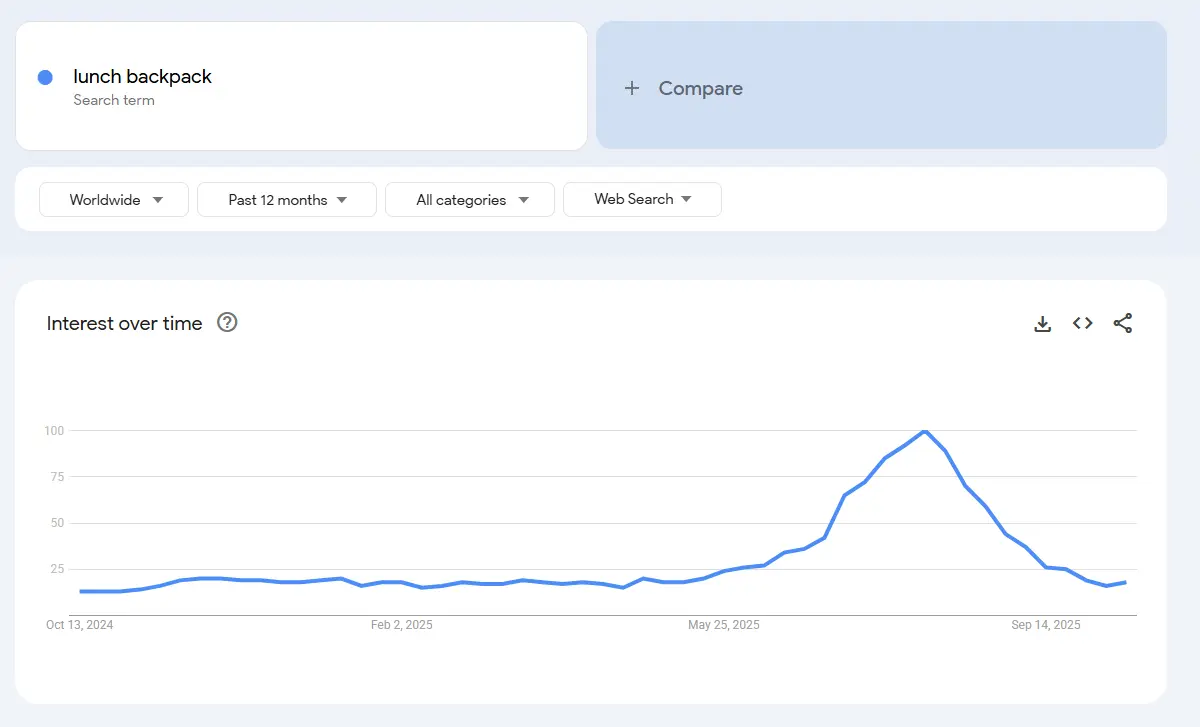
Supplier prices for basic models range from $10 to $18 per unit on platforms like Alibaba. Customized versions retail for $30 to $50, leaving room for a 40–60% profit margin after shipping and design costs.

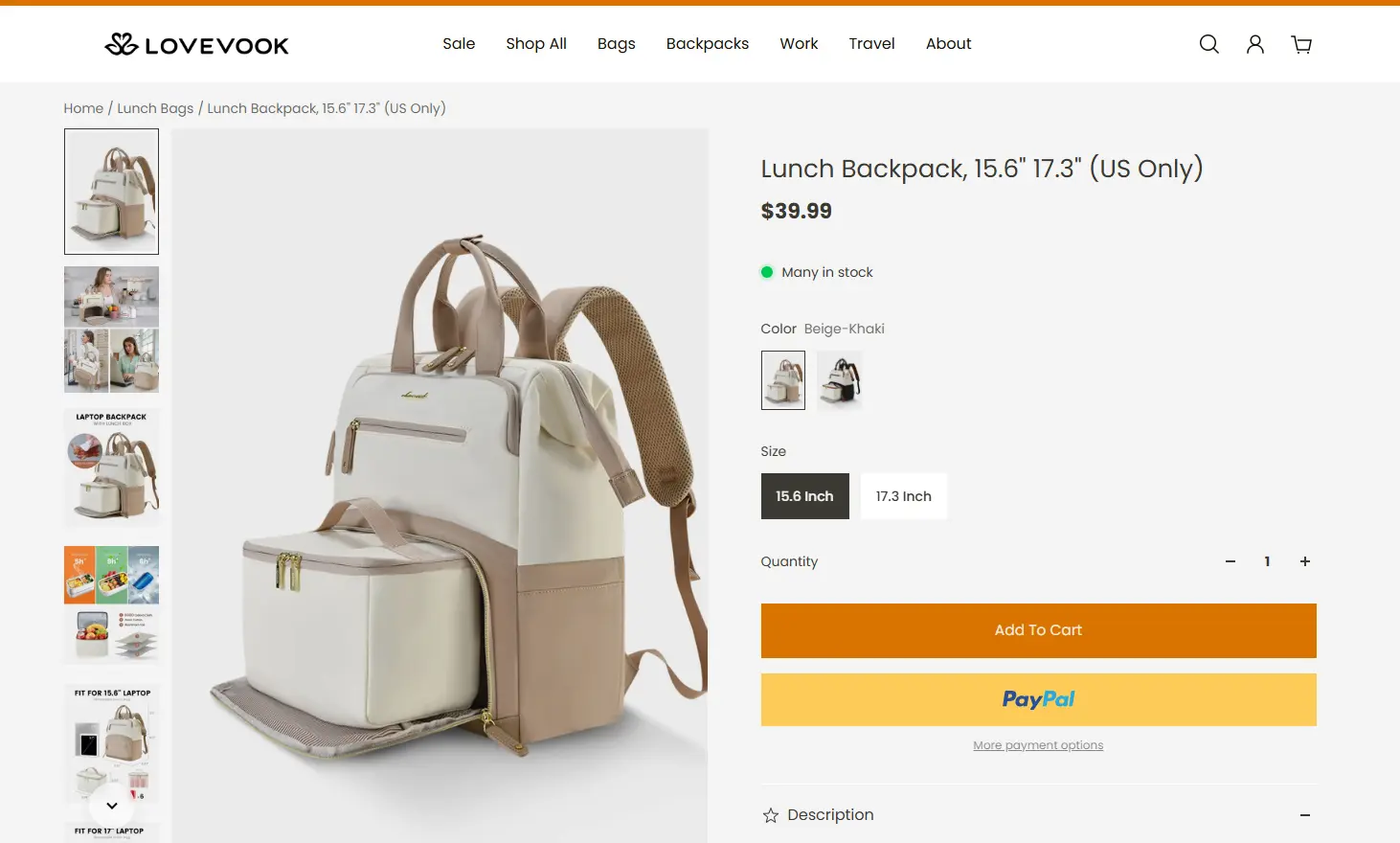
6. Recycled Scrunchie
- Supplier Price: $0.5–$1
- Selling Price: $5–$10
- Gross Profit Margin:60–70%
A recycled scrunchie is a hair tie made from reused materials like recycled polyester, organic cotton, or leftover fabric from clothing factories. It looks just like a regular scrunchie but is made in a more eco-friendly way — turning waste into something useful and stylish.

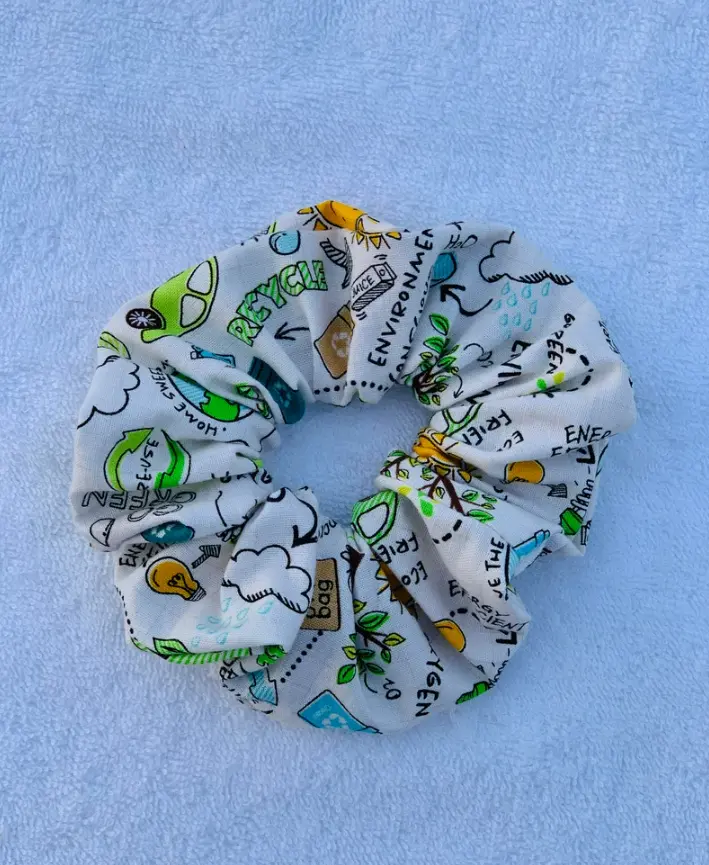
Searches for ‘eco-friendly scrunchie’ soared last year and remain steady in 2025, showing that sustainability is here to stay in the accessories market.

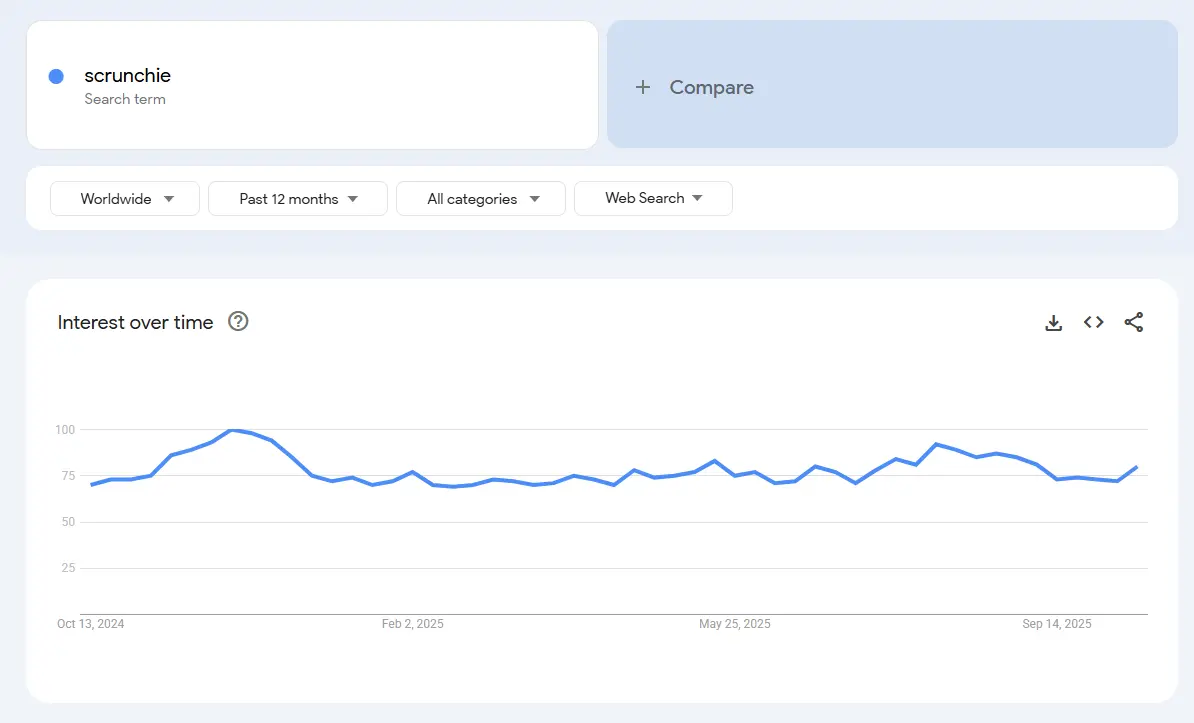
At roughly $1 to make and $5–$10 to sell, recycled scrunchies give small sellers a healthy return of 60–70% margin.

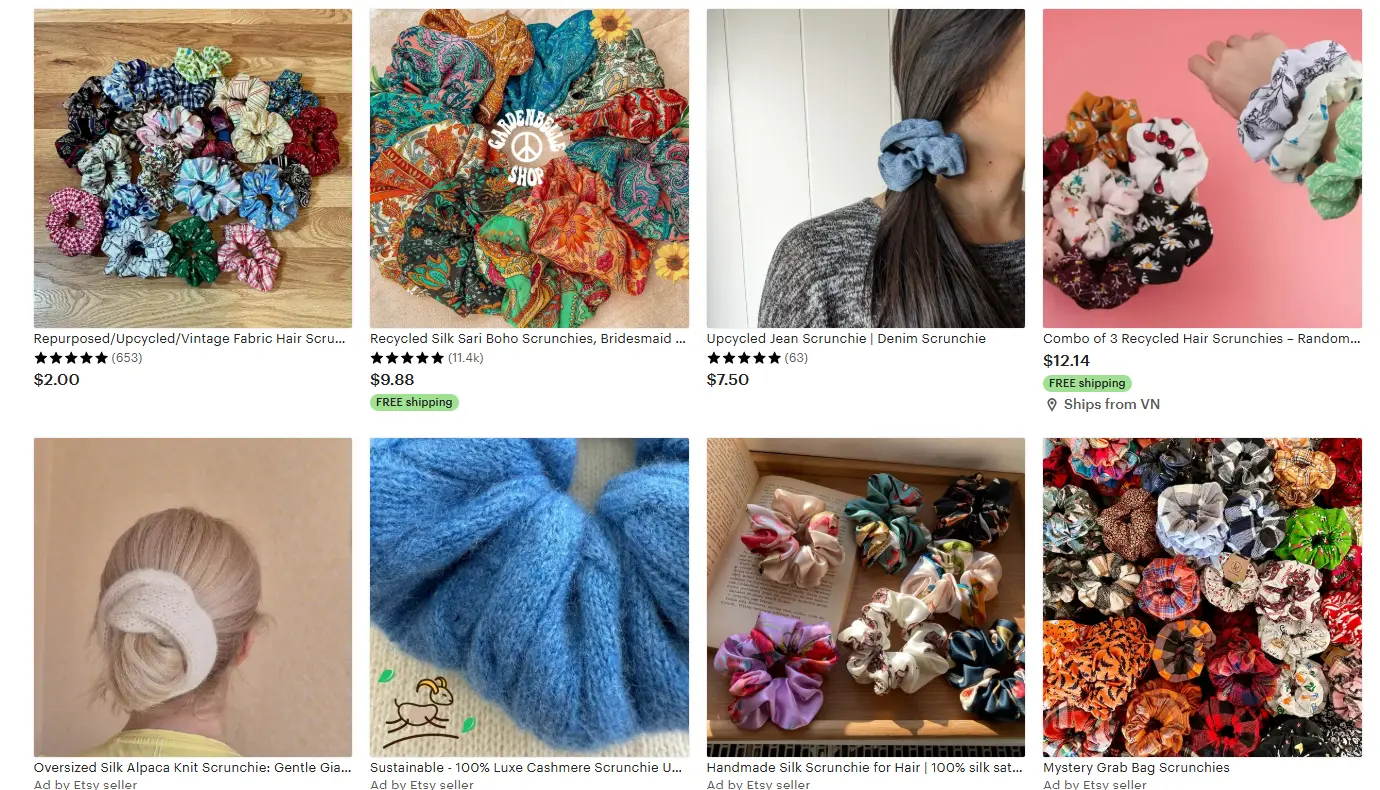
7. Custom Skateboard
- Supplier Price: $25–$40
- Selling Price: $80–$120
- Gross Profit Margin:50–60%
Skateboard is a mix of street culture and design that attracts artists, influencers, and small lifestyle brands looking for something different to sell.


In 2025, the skateboard market stays strong thanks to steady demand from Gen Z buyers and the rise of skate-inspired fashion. While mass brands lead the industry, there’s a growing niche for personalized or limited-edition designs sold online.

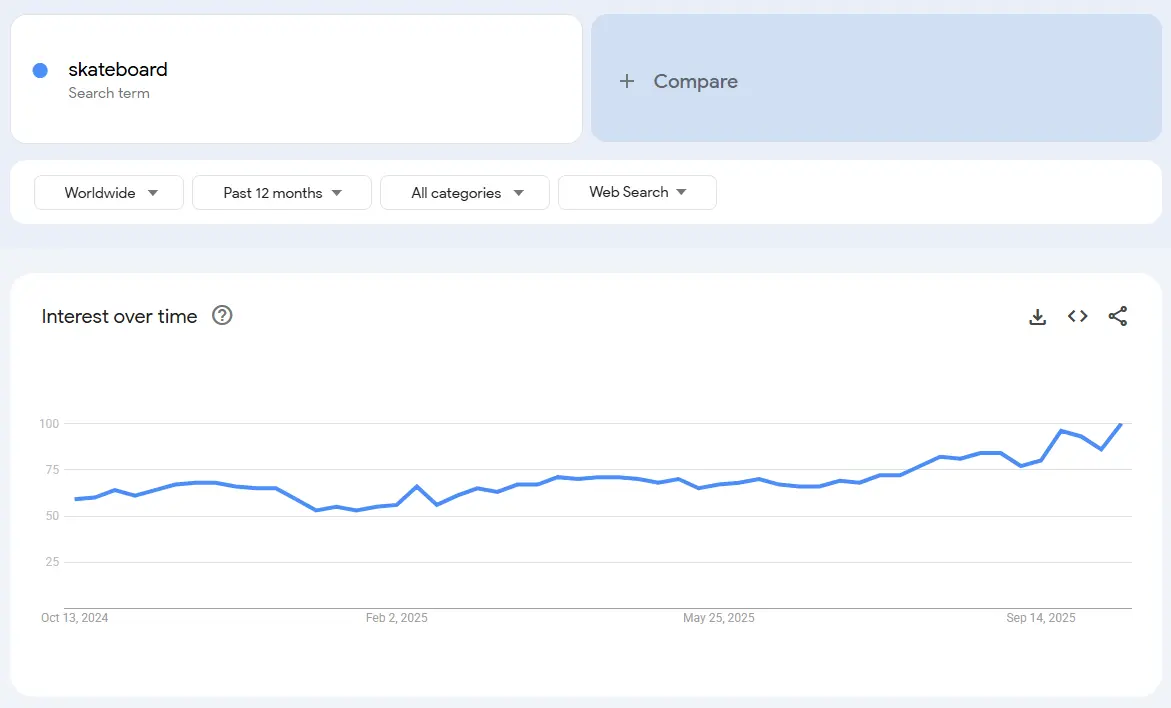
Supplier prices usually range from $25 to $40 per board, depending on material and print quality. Custom skateboards can retail between $80 and $120, leaving sellers with a profit margin of around 50–60%.

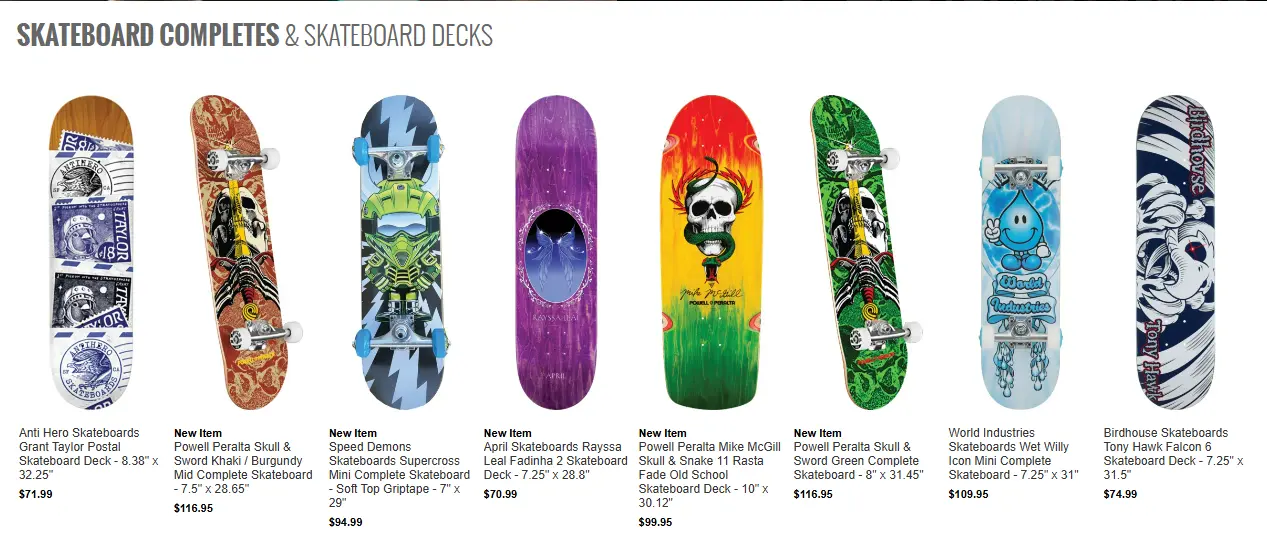
Further Reading
Is Unique Product Profitable?
The truth is, a unique, strange product can help you get attention, but it doesn’t guarantee profit. Uniqueness helps you stand out in a crowded market and attract clicks, especially when you’re competing on social media ads. But profitability depends on more than that — it’s about product-market fit, production cost, selling price, and how efficiently you acquire customers.
A profitable POD product usually shares three key traits:
First, steady market demand. It doesn’t have to be viral but it must fit a market with a clear audience. Products tied to hobbies, identity, or lifestyle niches tend to perform best.
Second, healthy profit margins. You should aim for at least a 25–40% net margin after production, shipping, and ad costs.
Third, room for creative differentiation. That’s where design comes in. In POD, design is your product. The same t-shirt or tumbler can either flop or sell out depending on how strong the design connects with the audience.
A product can be completely unique, but if the demand is too small or the margins are too thin after ad spend and fulfillment, it won’t make money. On the other hand, even a common item — like a t-shirt or mug — can be profitable if you target the right audience, price it correctly, and keep your costs under control.
Further Reading
How to Build a Profitable POD Business From Scratch
Step 1. Understand What Makes a Product Profitable
Before you even think about designs or ads, understand this: profitability starts with product-market fit.
That means you’re selling something that:
- Have steady demand (people buy them year-round).
- Allow personalization (so your design adds value).
- High-margin products can be priced with at least a 30–40% margin after all costs.
Step 2. Pick a High Demand Niche and Product
A “niche” is just a group of people with shared interests or identity. Think “dog moms,” “gamers,” “plant lovers,” or “coffee enthusiasts. Sellers should find one product that fits that lifestyle — like tote bags for coffee lovers or posters for gamers. Then you can check real signals of demand:
- Search trends (Google Trends, Etsy, or TikTok).
- Communities (Reddit, Facebook groups).
- Competitors (how many listings or reviews they have).
That’s how you confirm real buying interest before spending on ads.
Further Reading
Step 3. Find a Reliable Supplier
You can use platforms like Printful, Printify, Gelato, or for unique items, sourced from Alibaba or direct manufacturers. Before listing a product, order a sample. You need to see print quality, color accuracy, fabric feel, and packaging.
When testing suppliers, compare product cost per unit, shipping fee and time, packaging quality, return policy. It’s essential to write down every cost — because those small numbers determine your profit later.
Further Reading
Step 4. Calculate Your Profit Margin
Let’s say your total cost (product + print + shipping + fees) is $17. If you sell it for $35, your gross margin is ($35 - $17) / $35 = 51%. That’s a healthy margin. However, if you spend $10 to acquire a customer, your net profit is about $8. That’s how you calculate real profitability. You’ll be surprised how many sellers skip this part — and end up running “busy” but unprofitable stores.
Further Reading
Step 5. Build Your First Offer
Your store doesn’t need hundreds of products. In fact, your first offer should be one winning product with a few design variations.
Keep your product page simple with a clear hero image showing the design, one strong headline that tells the benefit, short description focusing on emotion or problem solved, and the fast checkout — no unnecessary steps. Your first goal here is to collect data — what people click, what they add to cart, and where they drop off.
Step 6. Design Like It’s the Product
A profitable design communicates a message that resonates with a target audience. It reflects an identity, belief, or emotion that buyers want to express. The clearer the message, the faster someone decides to buy.
Trends are a great source of inspiration, you can use trend research tools like Etsy’s search bar to see what people are actually searching for, Pinterest to track which styles are gaining saves, and TikTok Shop to spot what designs influencers are pushing.
Then, make the trend your own. For example, if “retro typography” is trending, mix it with your niche message like “Retro Gamer Club.”
Step 7. Launch and Test Your Ads
Upload multiple variations and test them with small ad budgets. Track metrics like CTR (Click-through rate), add-to-cart rate, and conversion rate. If CTR is high but conversions are low, your product page or pricing may need work. If both are low, the design might not connect with your audience.
Step 8. Scale What Works
Before scaling, you must be clear on what’s already working. Look at your data over at least two to four weeks to confirm:
- Your product has steady sales volume (consistent daily or weekly orders).
- Your profit margin is healthy (aim for at least 25–30% net).
- Your ads show positive nPOAS (Net profit on ad spend) — typically 2x or higher.
- Your conversion rate is stable (2.5%+ is a good benchmark for POD).
If all these are true, then you’re not guessing anymore — you’re scaling based on proof.
Further Reading
Evaluate Your Unique Product: Can It Sell Well?
Here’s the thing: Unique products grab attention but only profit makes it worth selling. Too often, many sellers realize too late that their “viral” product doesn’t bring any profit after ads, fulfillment, and transaction costs.
That’s where TrueProfit comes in. As the #1 Shopify profit analytics platform, TrueProfit gives POD sellers an accurate picture of their true profit in real time. Thanks to its integration with Gelato, Printiful, Printify, and other POD platforms, TrueProfit can automatically calculates all costs — product, shipping, transaction, ad spend, and more — so you can see which “unique” products are actually profitable.
Here’s how TrueProfit evaluate your product profitability and helps store grow profitable store:
- Spot true profit and loss instantly on an interactive, real-time dashboard
- Calculate product profitability after factoring all costs, helping you identify top performers
- Track store performance over time with a full P&L statement
- Automatically track exact COGS through seamless POD supplier integrations
With TrueProfit, you can test new ideas faster and scale only the products that are proven to be profitable.
Further Reading
Final Thoughts
The world of print-on-demand is changing fast — and the sellers who win in 2025 are the ones who dare to go beyond t-shirts and mugs. From inflatable pods to floating BBQ boats, custom energy drinks to recycled scrunchies, these non-traditional POD products prove that creativity still has room to grow.
Non-Traditional Print on Demand Products FAQs
What is the most profitable print-on-demand item?
Traditional leaders (t-shirts, mugs, phone cases) often give stable margins. But truly profitable POD items are those where you can command premium pricing for uniqueness — e.g. limited edition art wraps, custom structural items.
What products can be print-on-demand?
Anything where your design can be applied via digital printing, heat transfer, sublimation, or wrap printing. That covers apparel, home goods, accessories, signage, art, packaging, and — creatively — structural skins, inflatables, facades, etc.
What is the difference between print-on-demand and traditional printing?
POD prints only when there’s an order, with no inventory. Traditional printing (offset, screen print) often requires large minimum runs and inventory risk.
Is it legal to use Canva for print-on-demand?
Yes — generally — as long as your design uses elements (fonts, images) in accordance with Canva’s licensing terms. Avoid using copyrighted images you don’t own or have rights to. Read Canva’s commercial license agreements carefully.
What niche is trending in 2025?
Personalized/experiential decor, immersive environments (e.g. experiential retail), pet decor/accessories, wellness, AR/VR-compatible designs. In the POD space, home decor and pet products are expected to grow.
Which niche is best for print-on-demand?
One where you can add value via design, story, or customization and where competition is not overwhelming. Instead of “t-shirts for gamers,” try “t-shirts with AR-triggered animations for tabletop gamers.” The niche gives you a defensible position.
What sells best on Printify?
On Printify, high-volume items (t-shirts, hoodies, mugs) remain bestsellers. But sellers also layer in accessories and seasonal designs to diversify. (Note: this is the “mainstream” side, not weird niches.)
Is Printify or Printful better for selling non-traditional POD products?
It depends on your priorities:
- Printful: more integrated, higher quality control, slightly higher base costs.
- Printify: more flexibility in choosing print providers globally, wider catalog, often lower base cost.
For unique or large-format products, sometimes neither will suffice; you may need direct specialized partners.
Leah Tran is a Content Specialist at TrueProfit, where she crafts SEO-driven and data-backed content to help eCommerce merchants understand their true profitability. With a strong background in content writing, research, and editorial content, she focuses on making complex financial and business concepts clear, engaging, and actionable for Shopify merchants.

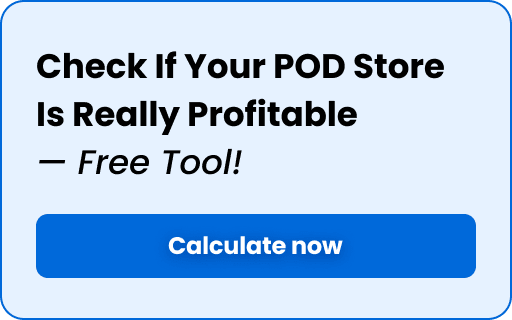
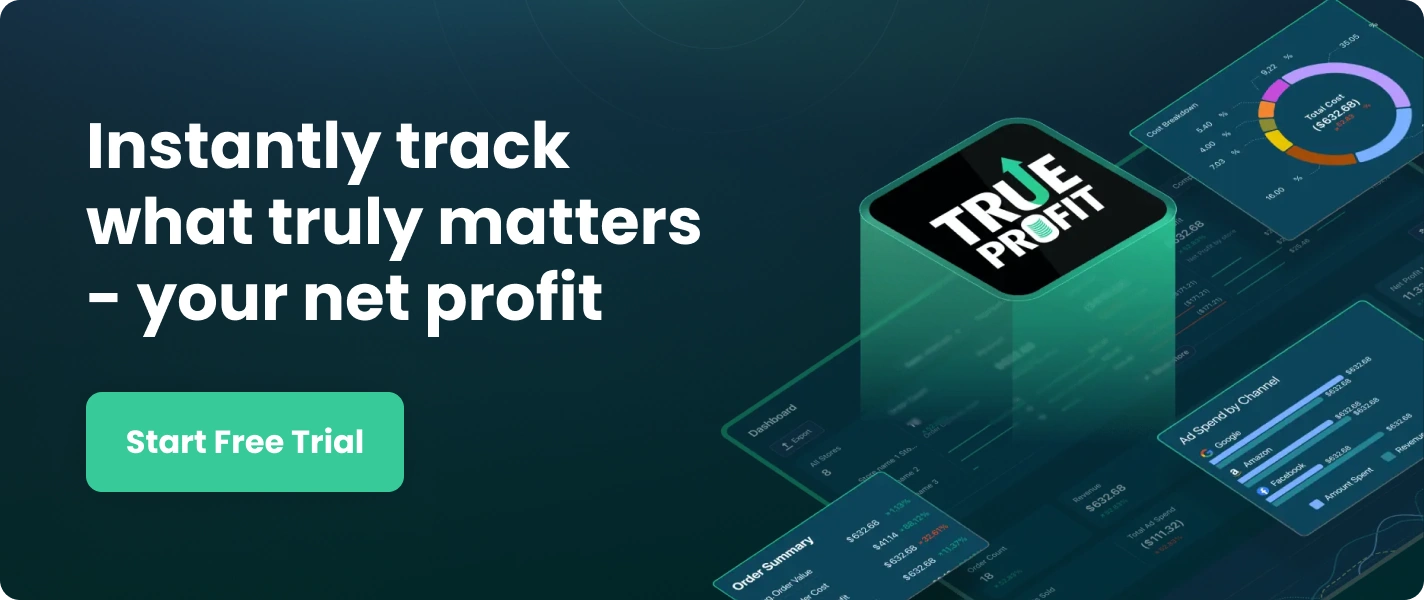
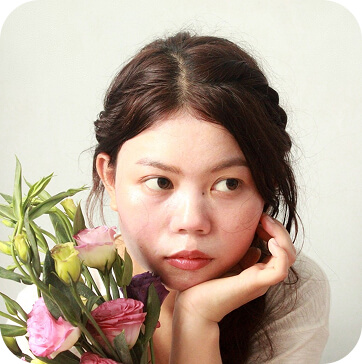
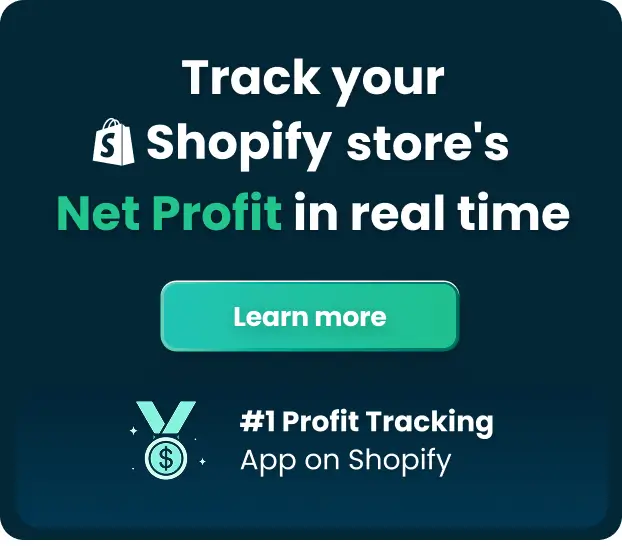
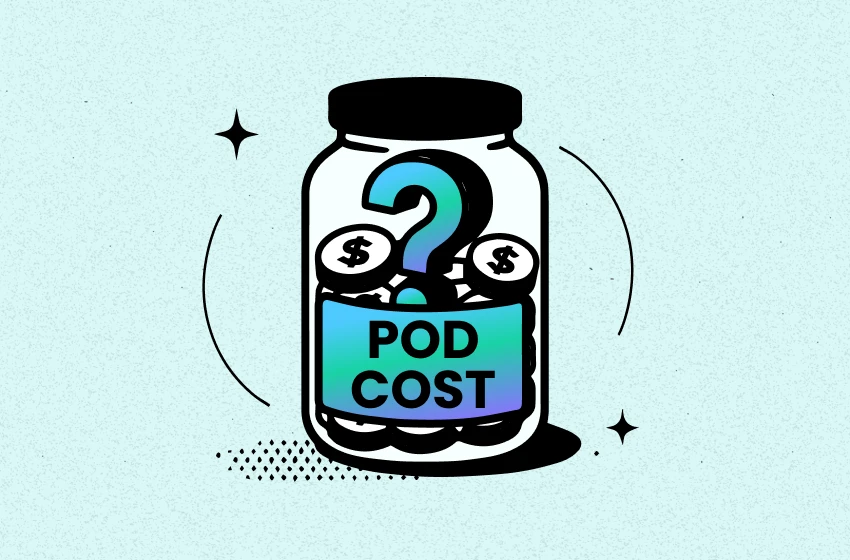
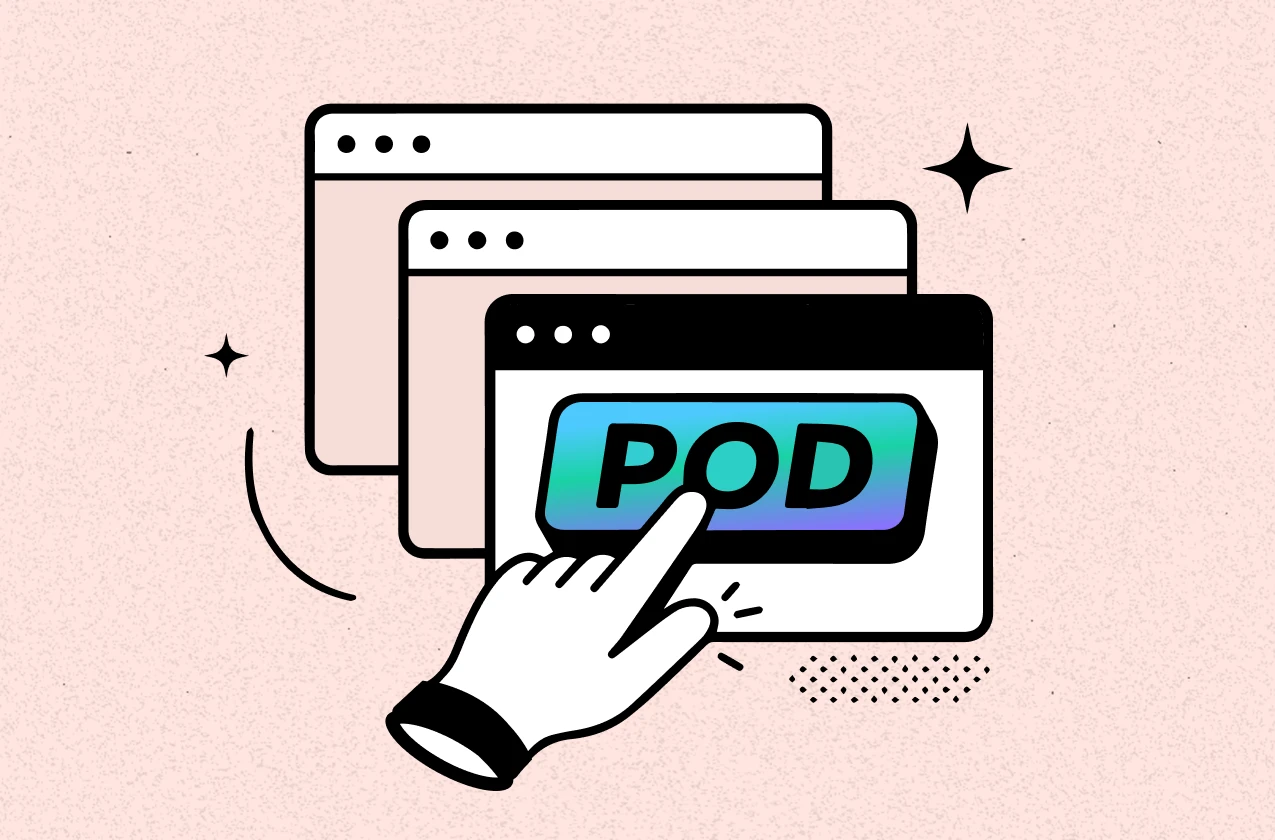
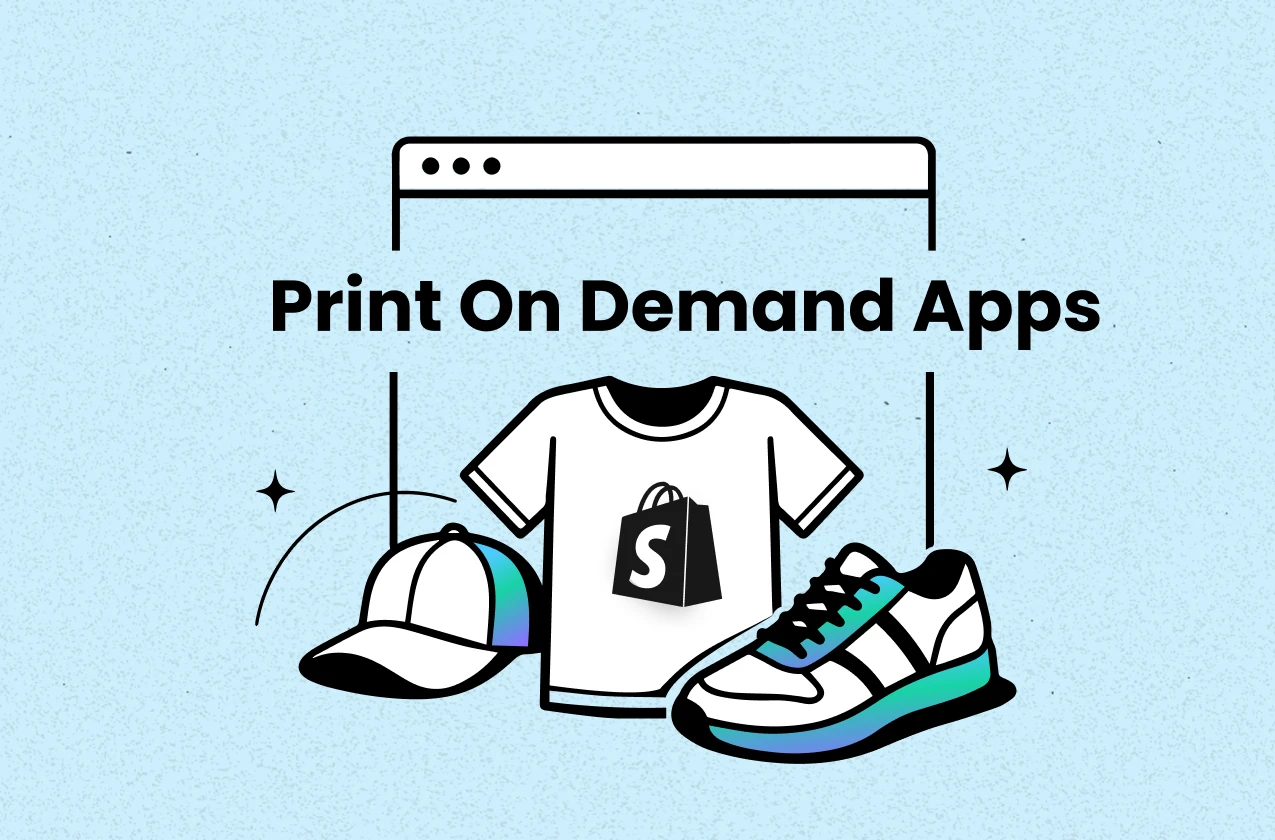
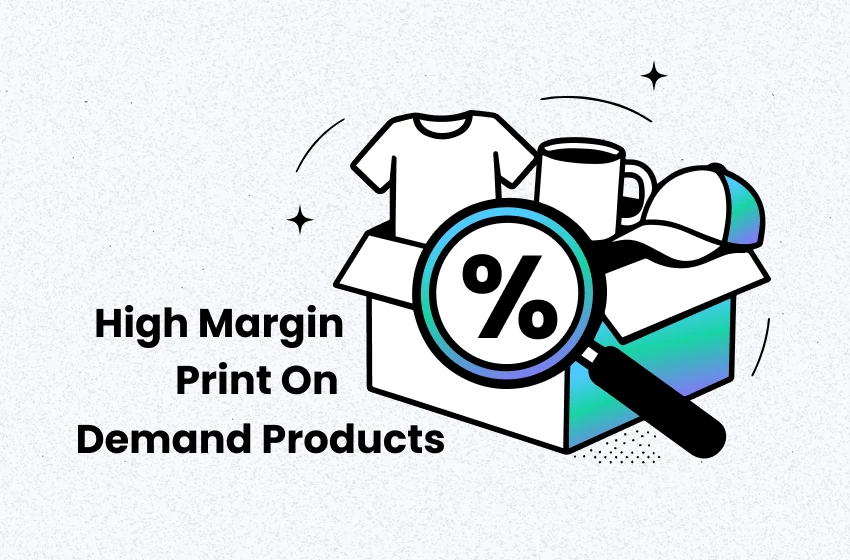
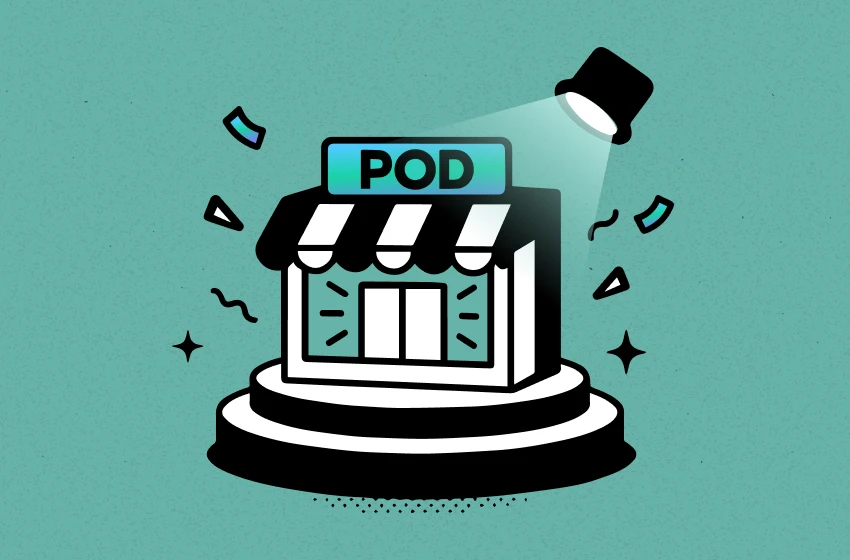
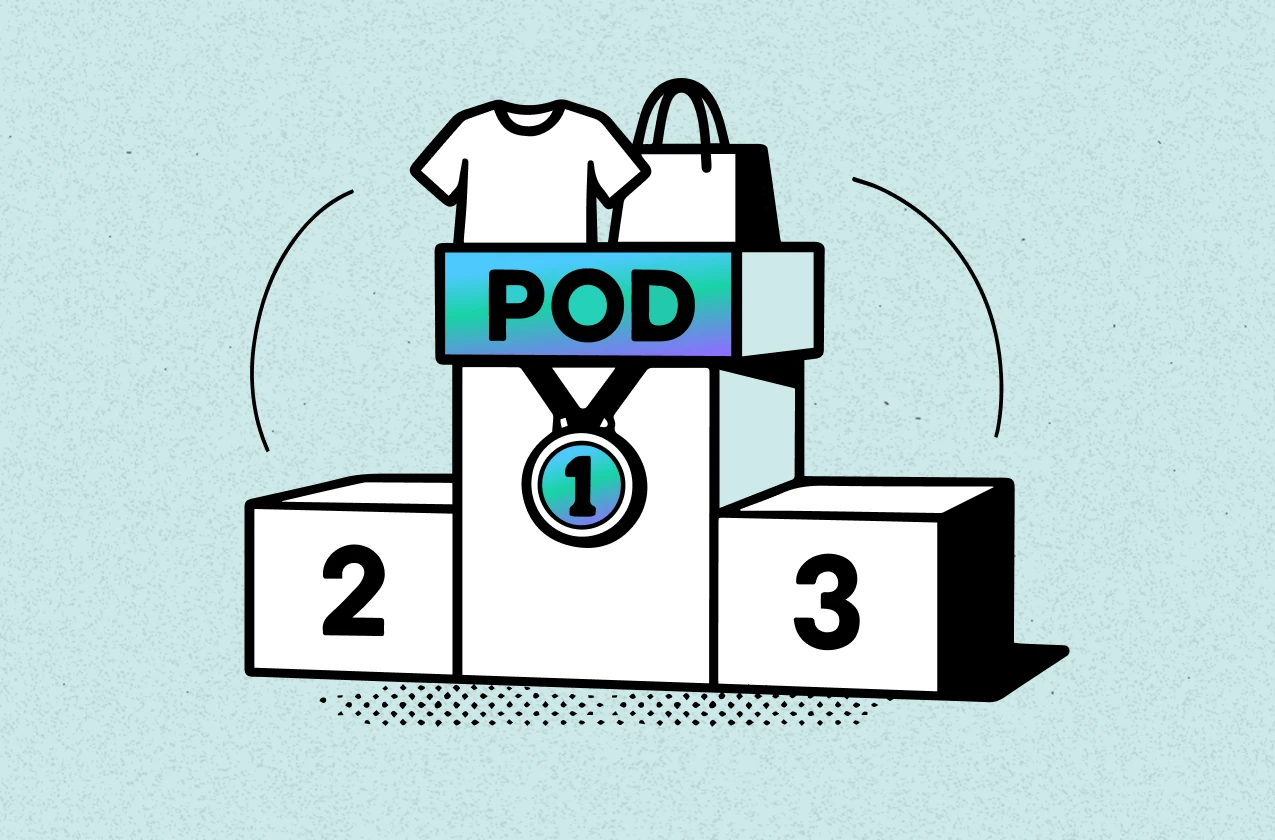
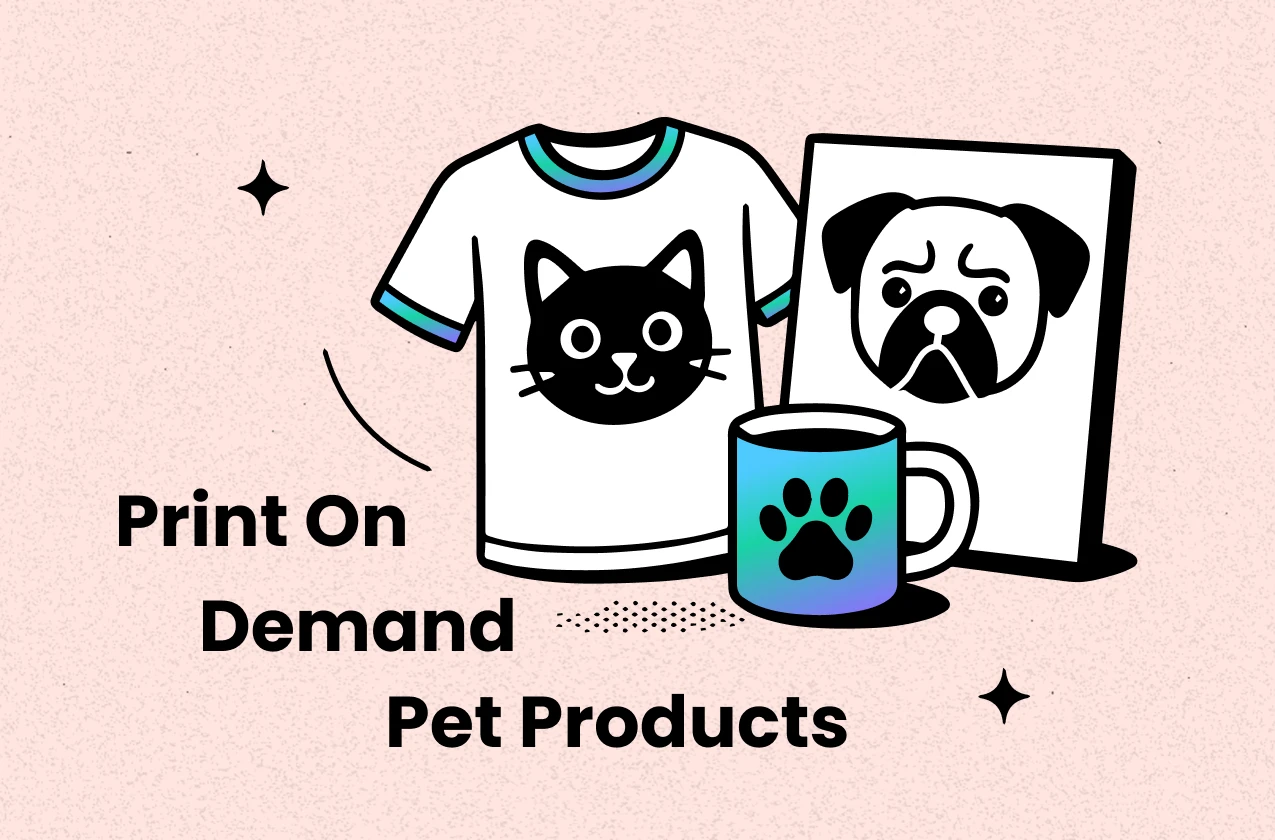
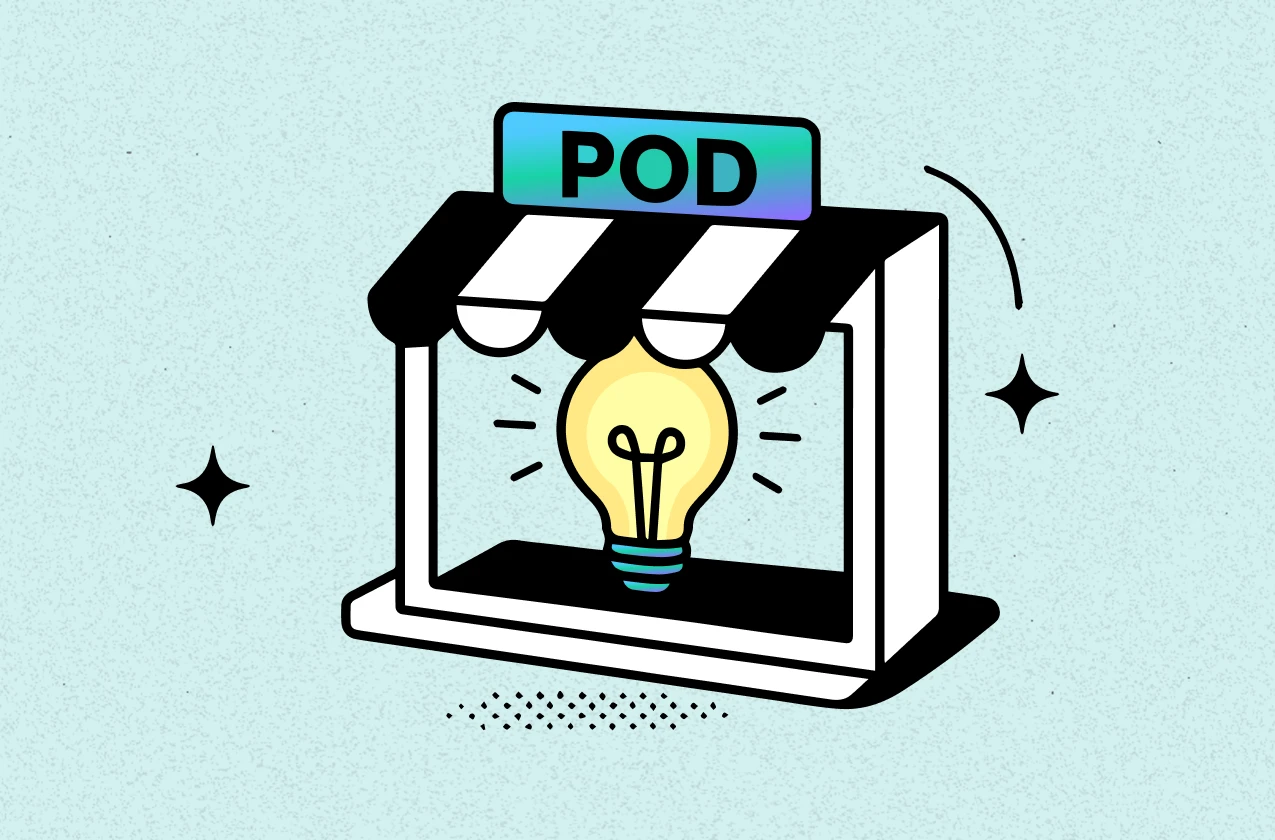
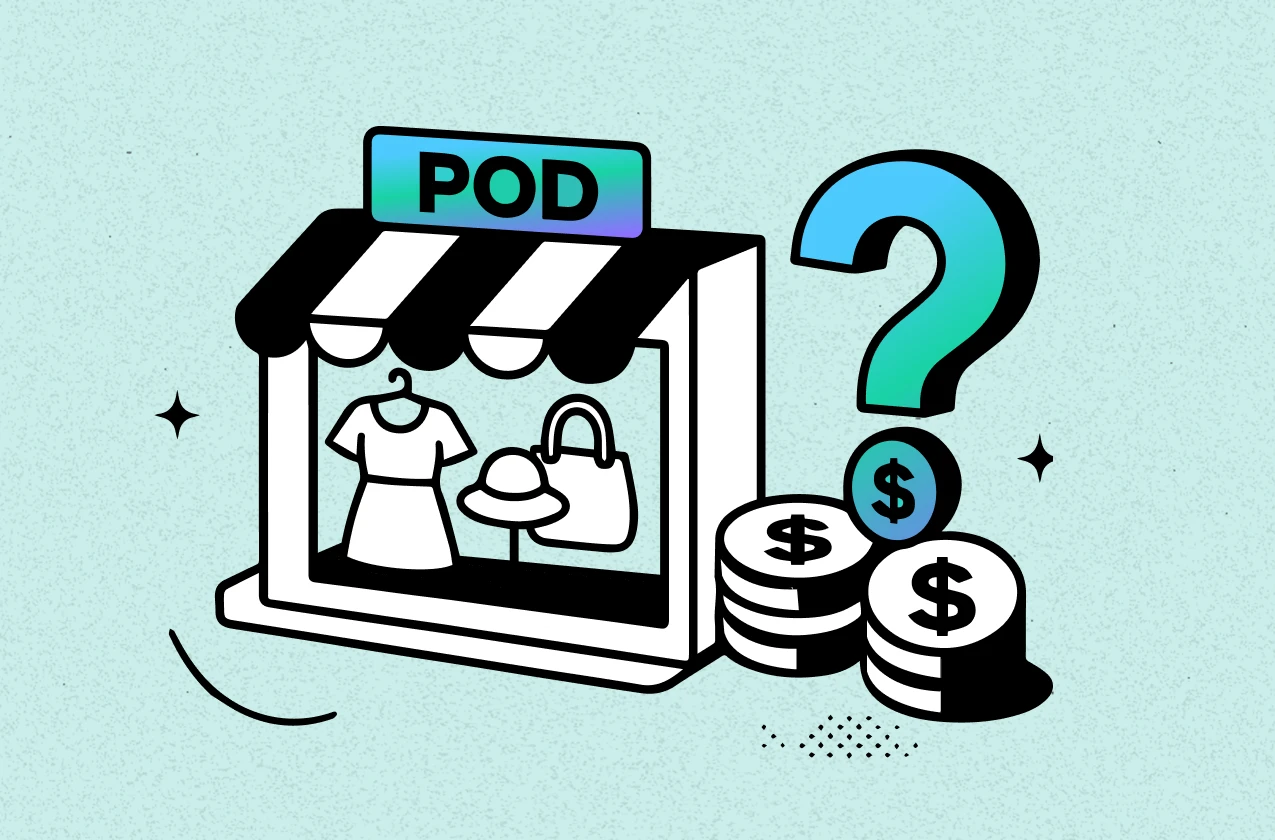
 Shopify profits
Shopify profits